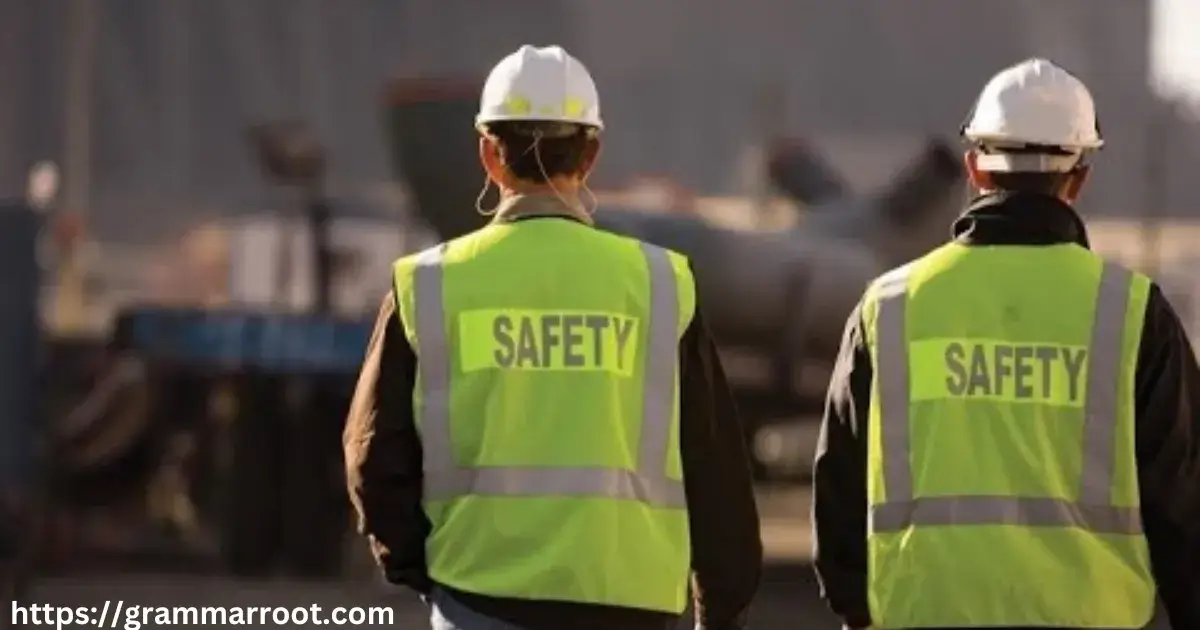When it comes to writing in English, it’s important to pay attention to spelling and word usage. One word that often causes confusion is “safety”. Many people mistakenly spell it as “safety” or “safty”. So, which one is correct? Let’s dive into the details to clear up this confusion and help you use the word “safety” correctly in any situation.
The Correct Spelling: Safety
The correct spelling of the word is “safety”, not “safty” or “saftey”. The word “safety” refers to the condition of being protected from harm, risk, or danger. It’s a noun that emphasizes protection and prevention from danger.
Examples of Correct Usage:
- Workplace Safety: In most workplaces, safety measures like fire drills, proper equipment, and safety protocols are crucial.
- Personal Safety: When traveling, it’s important to take precautions for your safety, such as securing your belongings and being aware of your surroundings.
- Home Safety: Installing smoke alarms is an essential part of ensuring home safety.
So, remember: safety is always spelled with an “e” after the “t”.
What About “Safty”?
“Safty” is a common misspelling of “safety”. It’s an incorrect form that many people use when typing too quickly or not paying close attention to their spelling. While this misspelling might slip through in informal contexts, it’s definitely something to avoid in professional writing, emails, or formal documents. Always double-check your spelling to ensure you’re using the right word.
Example of “Safty” in a Scenario (Incorrect Usage):
Subject: Urgent: Safty Measures in the Workplace
Dear Team,
Please remember to follow all safty guidelines when working with heavy machinery. It’s essential that we ensure everyone’s safty to prevent accidents. Ensure all safety equipment is worn and operational at all times.
Best regards,
John
In this case, the correct spelling should be “safety” in both instances. Using “safty” here would detract from the professionalism of the message.
Understanding the Meaning of Safety
At its core, safety refers to the condition of being free from harm or danger. It’s a broad concept that spans across various aspects of life, from health and safety in the workplace to personal safety when out in public. The term encompasses a variety of measures, protocols, and precautions designed to protect individuals or groups from harm.
Safety in Different Contexts
Here are some contexts in which safety is commonly used:
- Health and Safety: This typically refers to workplace or public safety standards aimed at preventing accidents, injuries, or illness.
- Fire Safety: Protocols and equipment designed to prevent fires and ensure people’s safety in case of a fire.
- Traffic Safety: Measures, rules, and devices designed to prevent accidents on the road and keep drivers and pedestrians safe.
- Food Safety: Practices that prevent foodborne illnesses and ensure food is prepared, stored, and consumed safely.
Safety Spelling and Its Importance
Spelling the word “safety” correctly is important, particularly in professional or academic settings. Misleading spellings like “safty” or “saftey” can make you appear less detail-oriented, which could impact your credibility in formal writing or communications.
Safety First
One of the most commonly heard phrases is “Safety First.” It’s used to emphasize the importance of safety in any situation. Whether it’s on a construction site, during a sports event, or at home, putting safety first means prioritizing protection and precautions before taking any risks.
Example Scenario (Safety First in an Email)
Subject: Safety First During Our Upcoming Event
Dear Team,
As we prepare for the upcoming event, please remember that safety first is our top priority. We have arranged for all necessary precautions to be in place, including first aid kits and trained staff to handle any emergencies.
Please make sure you are familiar with all safety protocols and guidelines before the event starts. If you have any questions or concerns, feel free to reach out to me directly.
Best regards,
Emma
This email demonstrates the importance of emphasizing “safety first” in any professional setting.
Common Misspellings: Saftey and Safty
While “safty” is the most common misspelling of “safety,” another common error is “saftey.” It’s easy to see how this mistake happens—people may mix up the “e” and “t” when typing quickly. However, it’s still incorrect, and the proper spelling is “safety.”
“Saftey” is often a typo that happens when people aren’t paying attention. Just as with “safty”, this misspelling should be avoided in professional writing.
Example Scenario of “Saftey” in an Email (Incorrect Usage)
Subject: Saftey Guidelines for the Weekend Trip
Dear Team,
Before we head out on our weekend trip, please ensure you’ve reviewed the saftey guidelines we’ve sent. We’ll be in a remote area, so it’s crucial to follow all saftey rules to stay protected.
Best,
Sarah
In this case, “saftey” should be “safety.”
Exploring Other Related Terms
Here are some variations of “safety” and related words that are important to be familiar with:
1. “Safety Football”
When referring to safety in football, the term often refers to a specific type of play in American football. A safety in football is when the offensive team is tackled in their own end zone or commits certain penalties, resulting in two points awarded to the defending team.
2. “Safety Rules”
Safety rules are guidelines established to prevent accidents and injuries in various environments. These rules are crucial in workplaces, schools, sports, and even at home.
3. “Safeness” vs. Safety
You might encounter the term “safeness” as a synonym for “safety,” but “safety” is more commonly used. “Safeness” sounds more formal and isn’t used as frequently.
4. “Health and Safety”
This term refers to the policies, practices, and regulations in place to ensure the health and safety of individuals, particularly in the workplace or public spaces. It encompasses everything from maintaining a clean environment to proper training on handling hazardous materials.
5. “Safety Spelling”
To clarify, the correct spelling is “safety,” with an “e” after the “t.”
20 Points to Remember About Safety and Spelling
Here’s a quick summary of key points about safety and its correct usage:
- The correct spelling is “safety,” not “safty” or “saftey.”
- Safety refers to protection from harm or danger.
- Always prioritize “safety first” in high-risk situations.
- Safty is a common misspelling to avoid.
- Saftey is another common mistake; use “safety” instead.
- Use “safety” in professional writing to convey competence and attention to detail.
- “Health and safety” regulations are crucial in preventing workplace accidents.
- Safety football refers to a specific term in American football.
- Understand the meaning of “safety rules” in various environments.
- Avoid “safeness”; “safety” is the preferred term.
- Safety spelling should be double-checked in professional settings.
- Spelling mistakes like “safty” can hurt your credibility in formal writing.
- Keep your writing clear by using the correct spelling of “safety.”
- “Safety first” should always be your mindset in risky situations.
- Be aware of the safety measures required in different contexts (e.g., fire safety, workplace safety).
- Ensure that safety guidelines are clear and followed in group settings.
- For emails or professional documents, always use “safety” over “safty” or “saftey.”
- Safety is about minimizing risks and preventing harm in various contexts.
- When in doubt, double-check your spelling using a dictionary or spellcheck tool.
- Consistently use “safety” in any communication to maintain professionalism and clarity.
Conclusion
To wrap it up, “safety” is the proper spelling and usage of the word. Mistakes like “safty” or “saftey” are common, but they are incorrect. Remember to use “safety” consistently in your writing, whether in emails, professional documents, or casual conversations. Prioritizing safety not only ensures protection from harm but also reflects a commitment to detail and responsibility. Stay safe, and always keep safety at the forefront of your actions!

Johan is an professional & experienced blogger passionate about language and writing on Grammar root. He shares his expertise in grammar, punctuation, and effective communication, making complex rules simple and accessible for readers. With a knack for clear explanations and engaging content, Steel aims to help others master the art of language.

